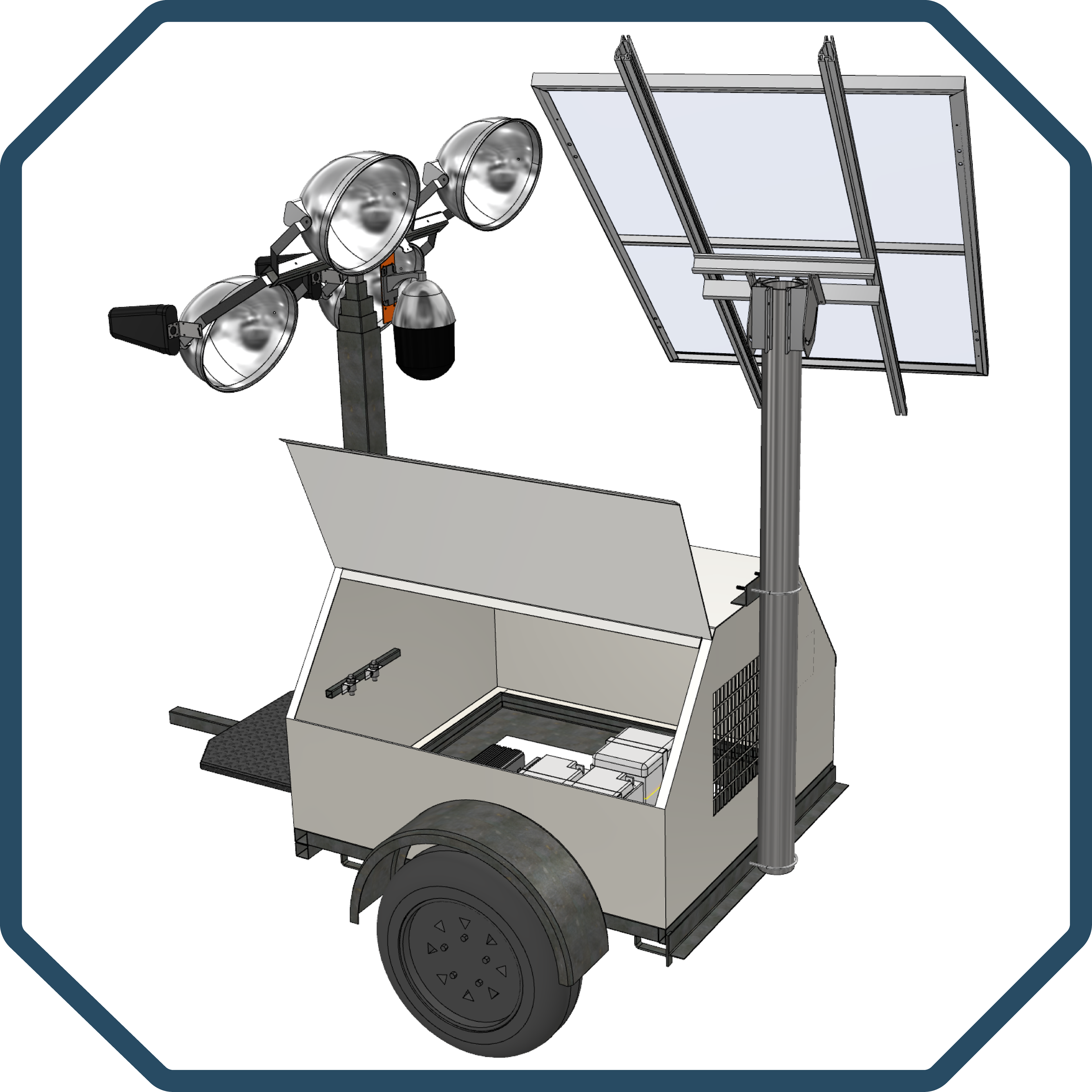
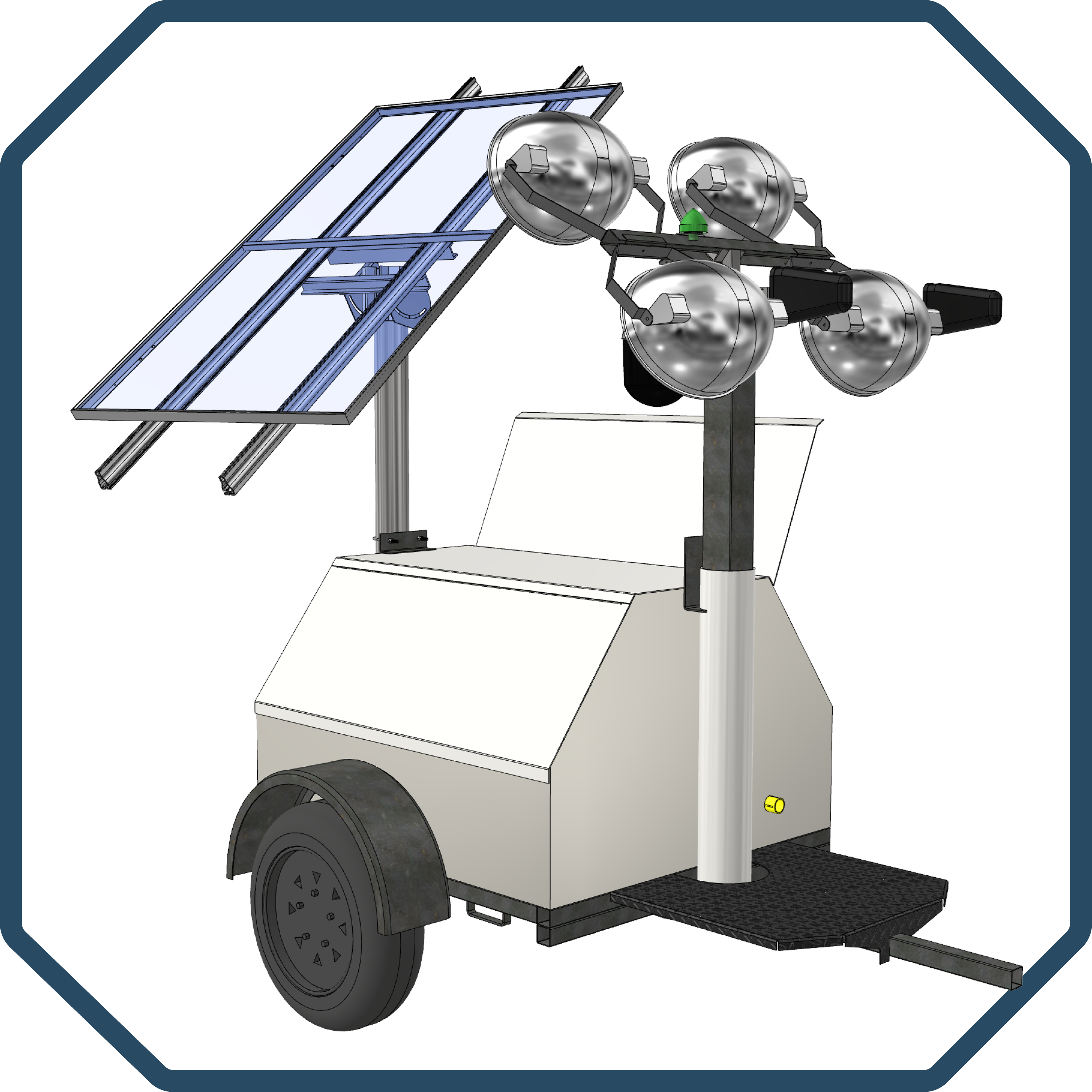
ABOUT THE CLIENT
Crosstek is the choice technology solutions provider for an international customer base, delivering global solutions for Agriculture, Engineering and Defense Sectors.
INTRODUCTION
This project was brought to Bedrock Design and Craft, LLC as system-level scope to define inter-connections for a number of commercial-off-the-shelf hardware items. The project is unique in that it is meant to be deployed remotely and left untended for long periods of time. The initial concept evolved from a buried set of electrical junction boxes to a commercial diesel light tower trailer converted to a solar-powered data acquisition platform.
PROJECT SCOPE
Preparation of inter-connection diagrams and mechanical assembly and detail drawings. As-built field survey pictures were provided by the client.
DESIGN PROCESS
All of the work was completed remotely and asynchronously by teams working in several time zones. The project was tracked using detailed issue logs and questions were resolved using video calls. Bedrock performed exhaustive industry review of the commercial-off-the-shelf hardware to ensure the system was engineered appropriately. Deep expertise gained from rolling stock integration projects in the rail transit industry proved to be a key enabler.
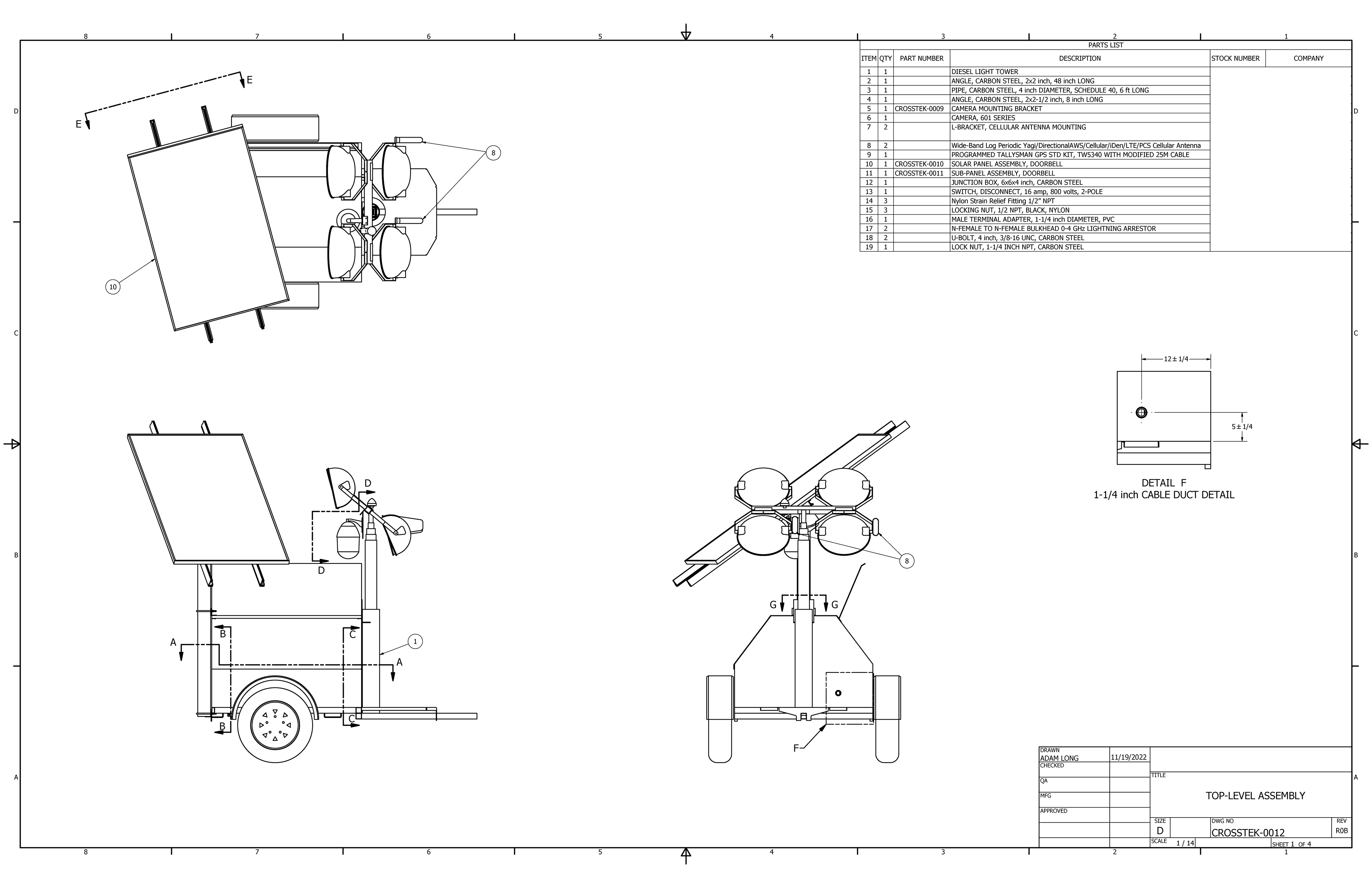
TOP LEVEL ASSEMBLY DRAWING
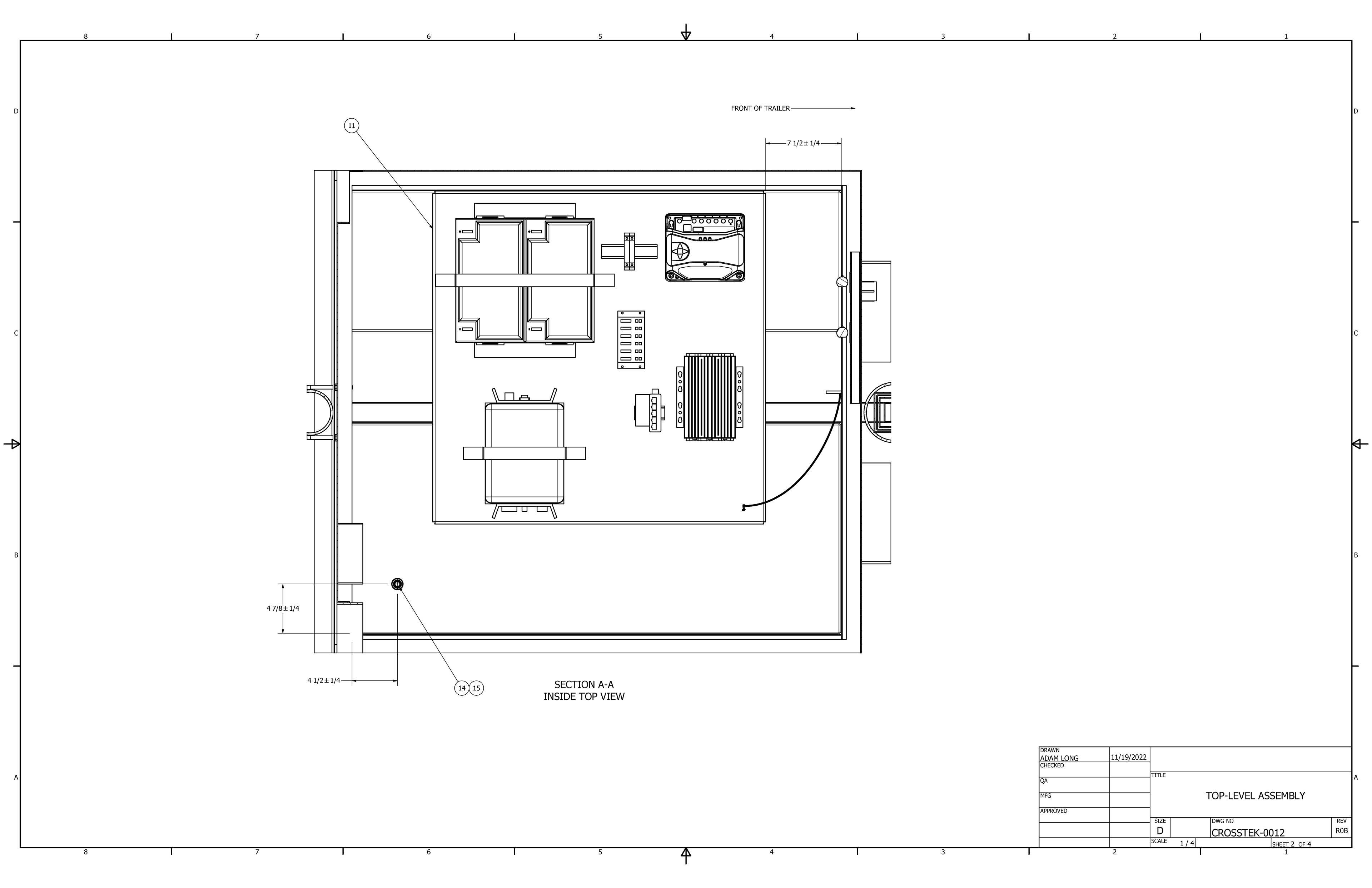
TOP LEVEL ASSEMBLY DRAWING
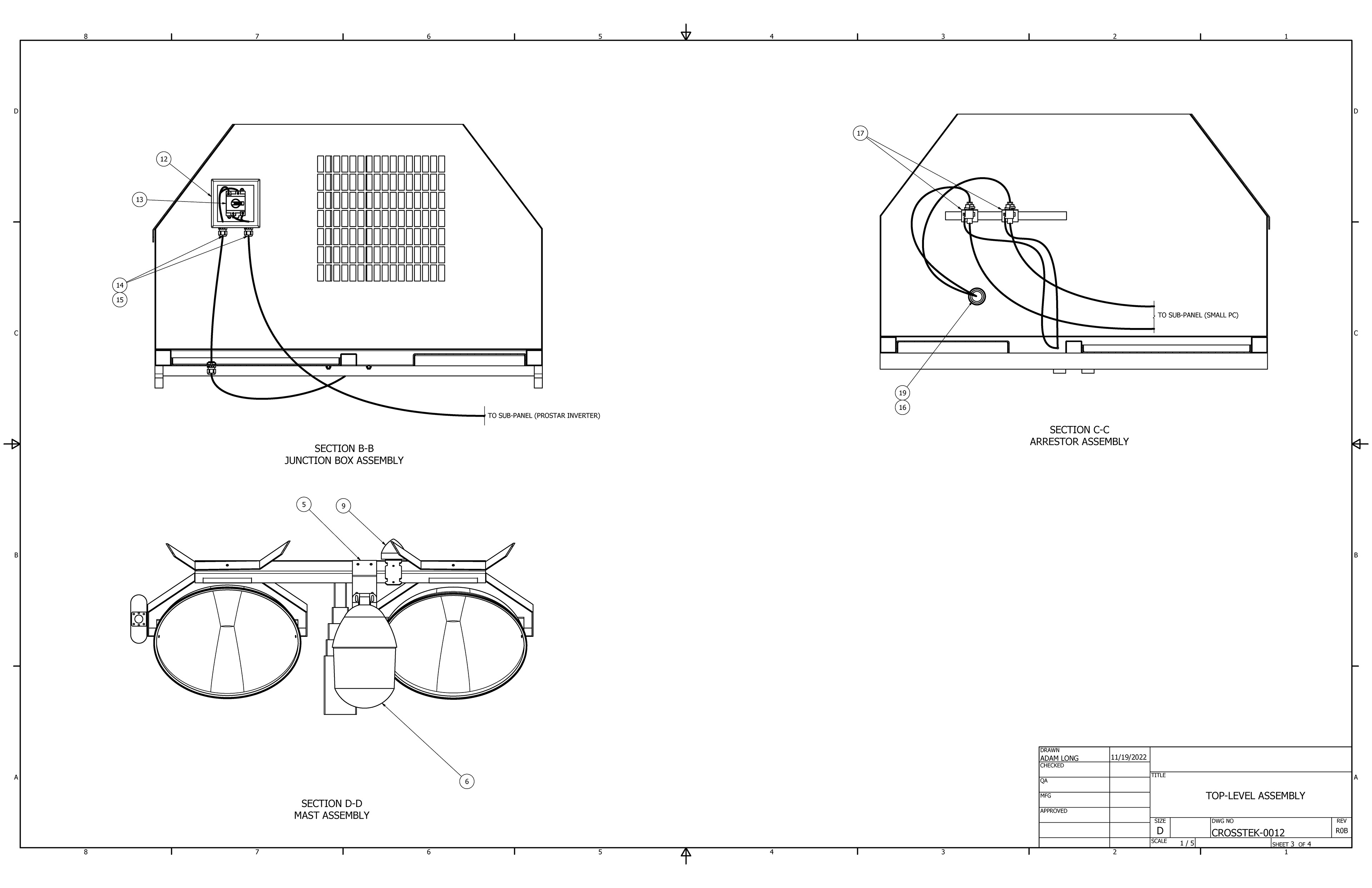
TOP LEVEL ASSEMBLY DRAWING
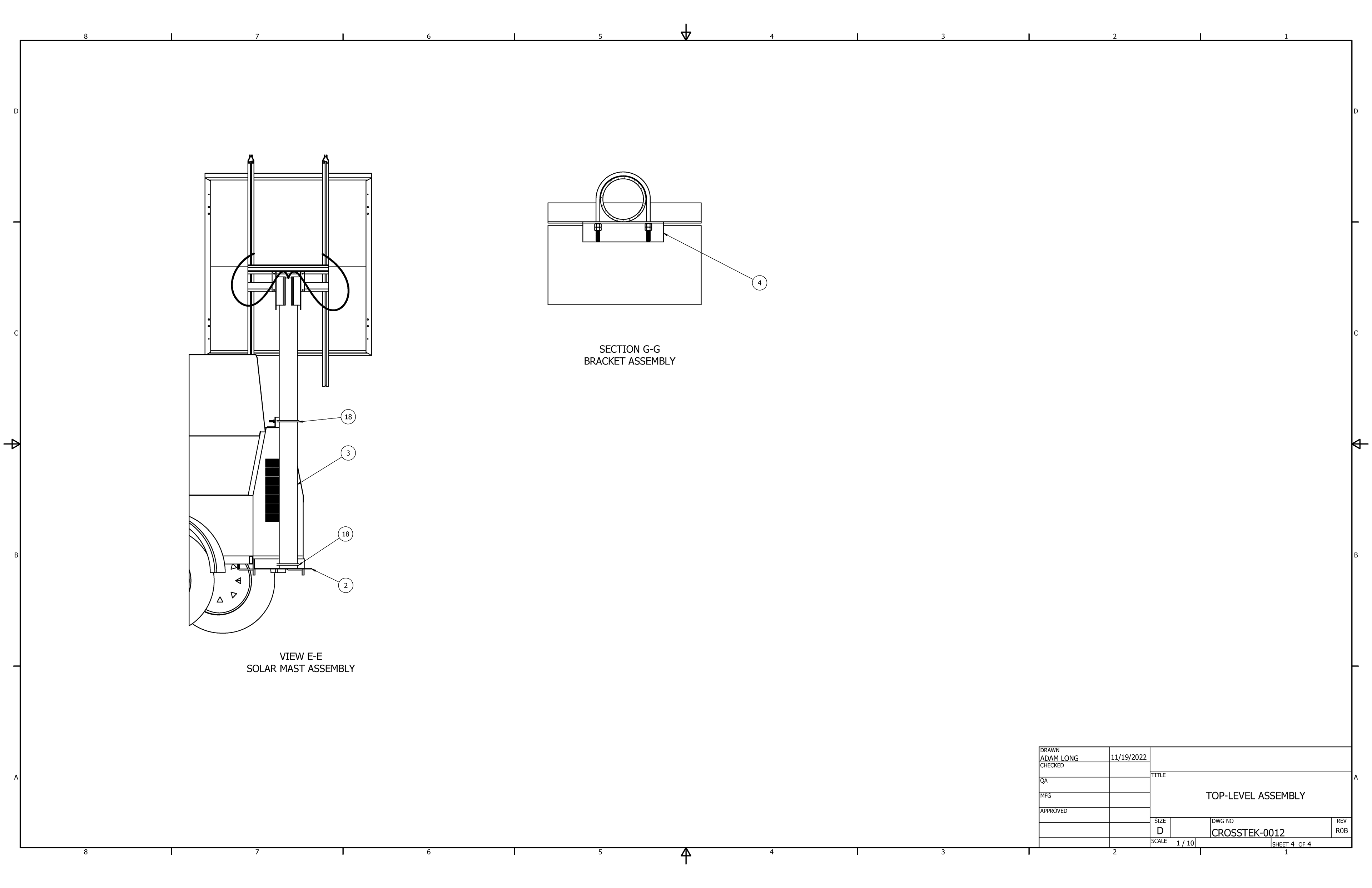
TOP LEVEL ASSEMBLY DRAWING
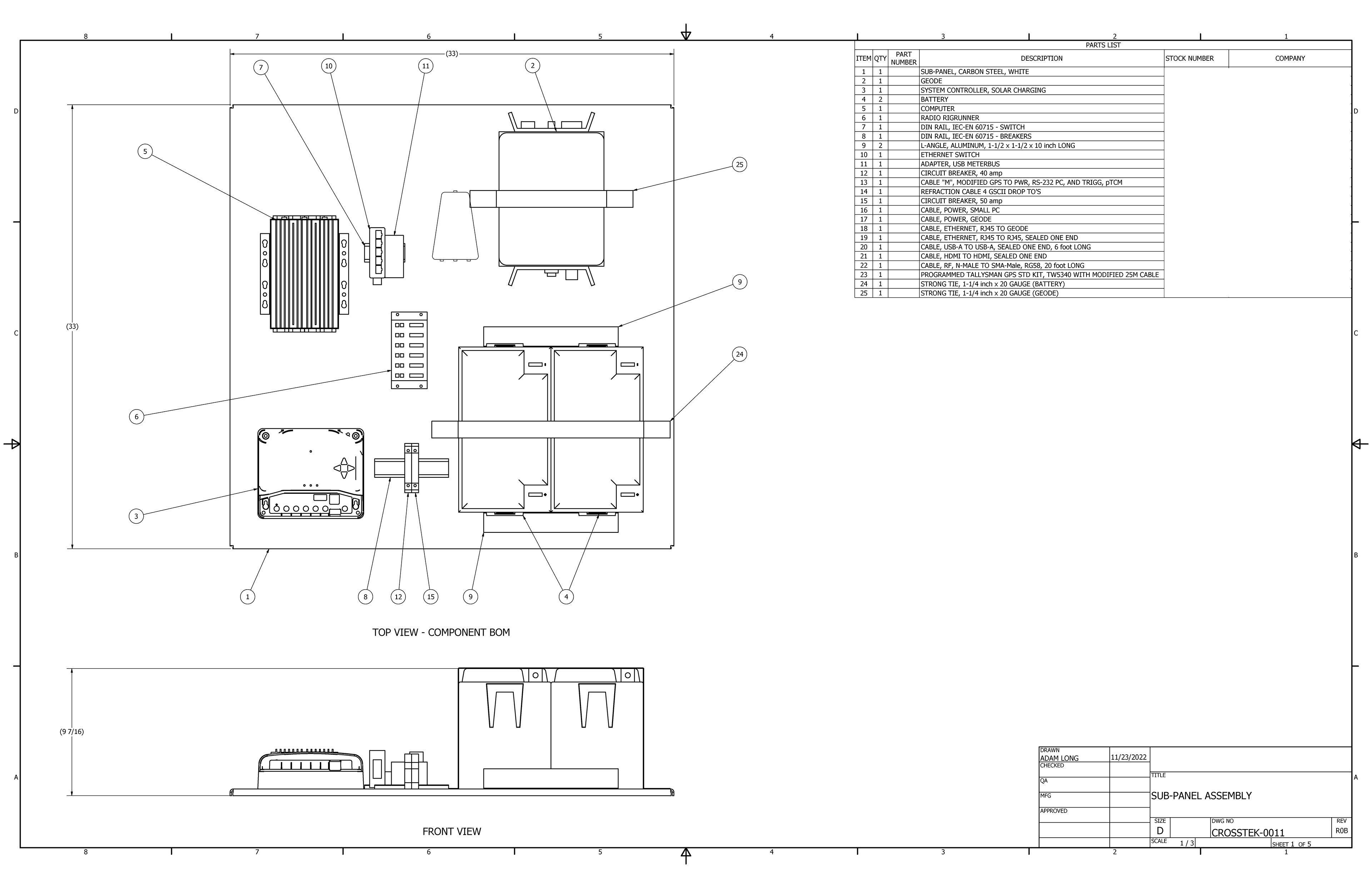
SUB-PANEL ASSEMBLY
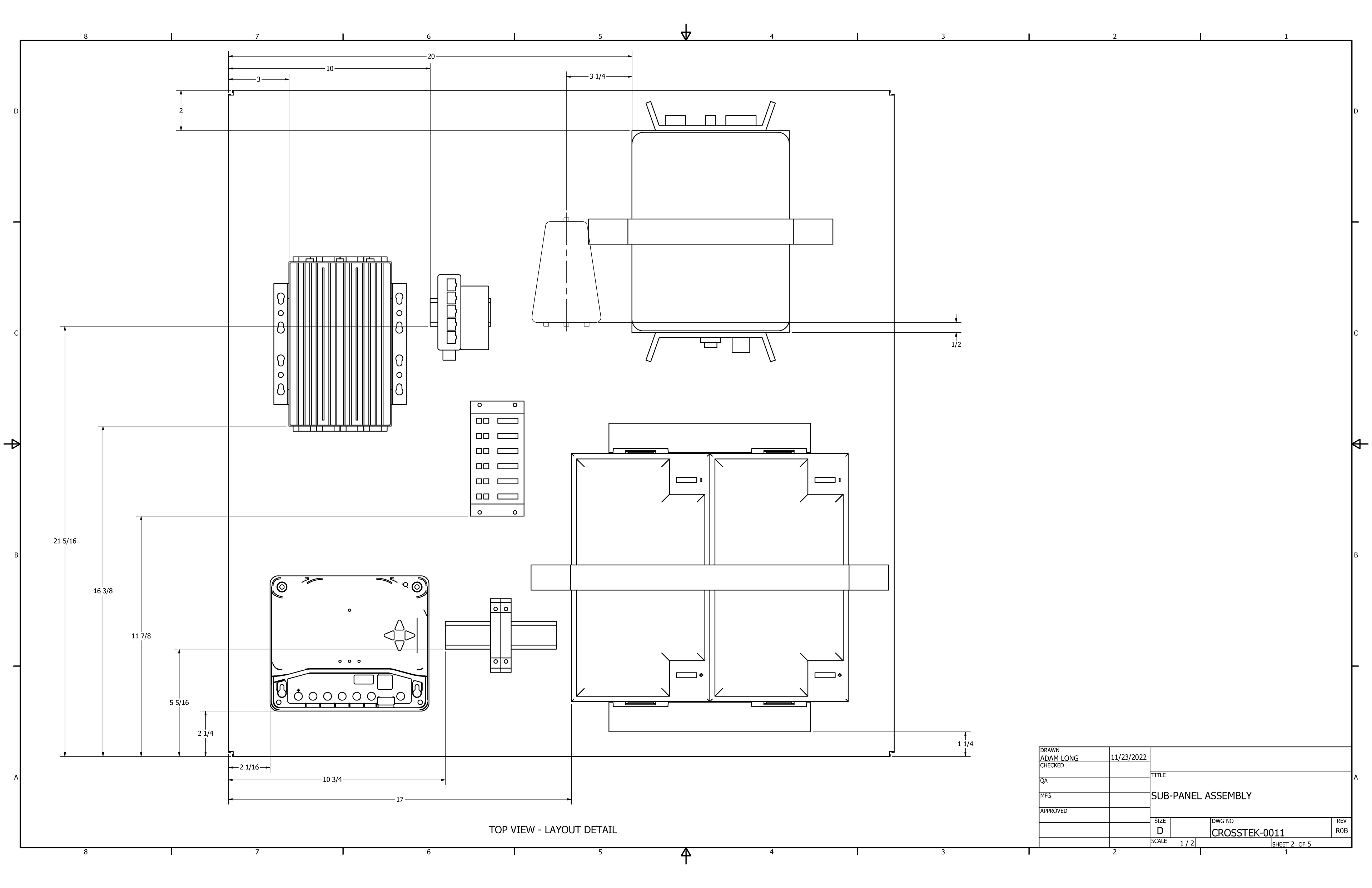
SUB-PANEL ASSEMBLY
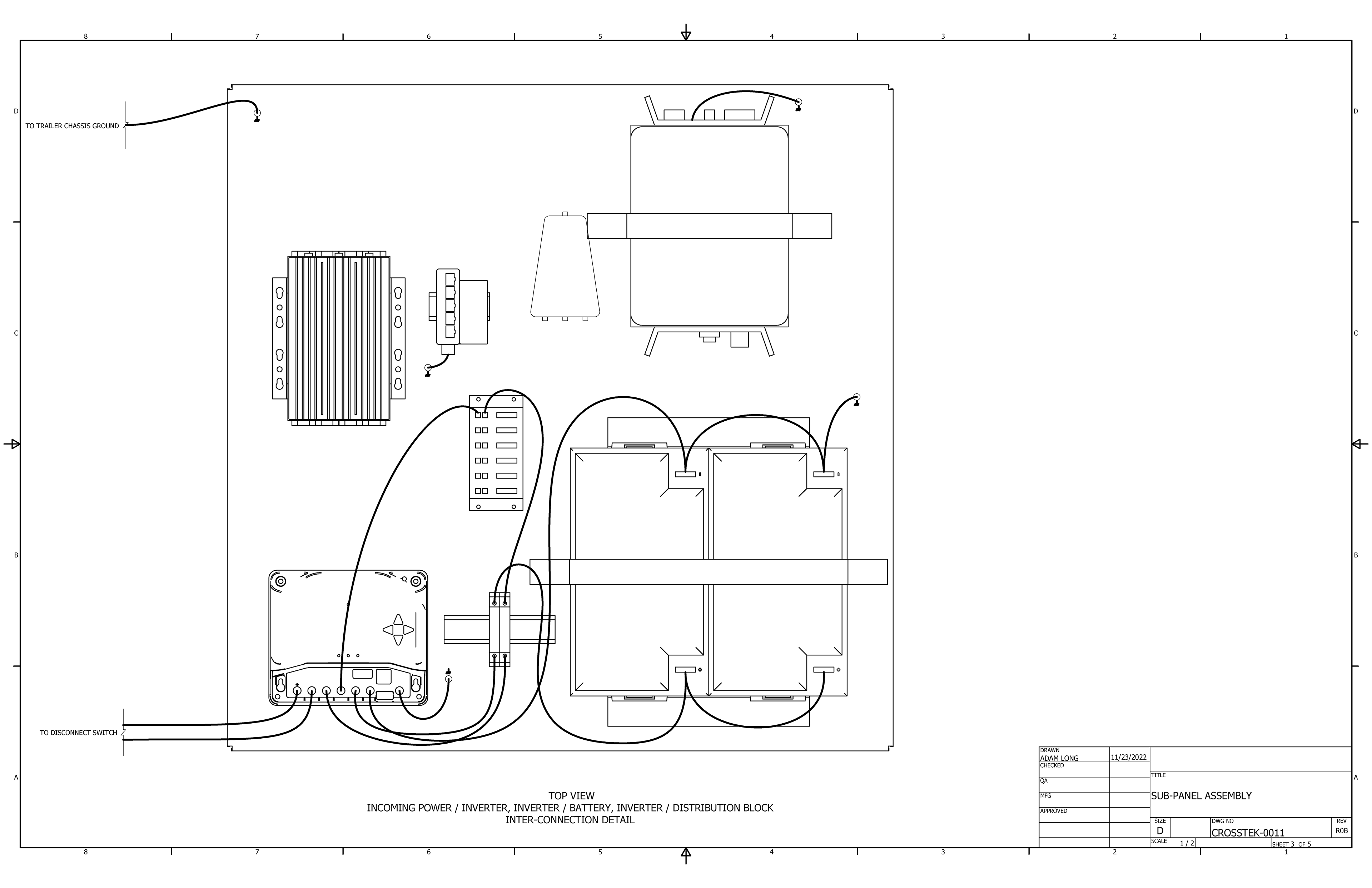
SUB-PANEL ASSEMBLY
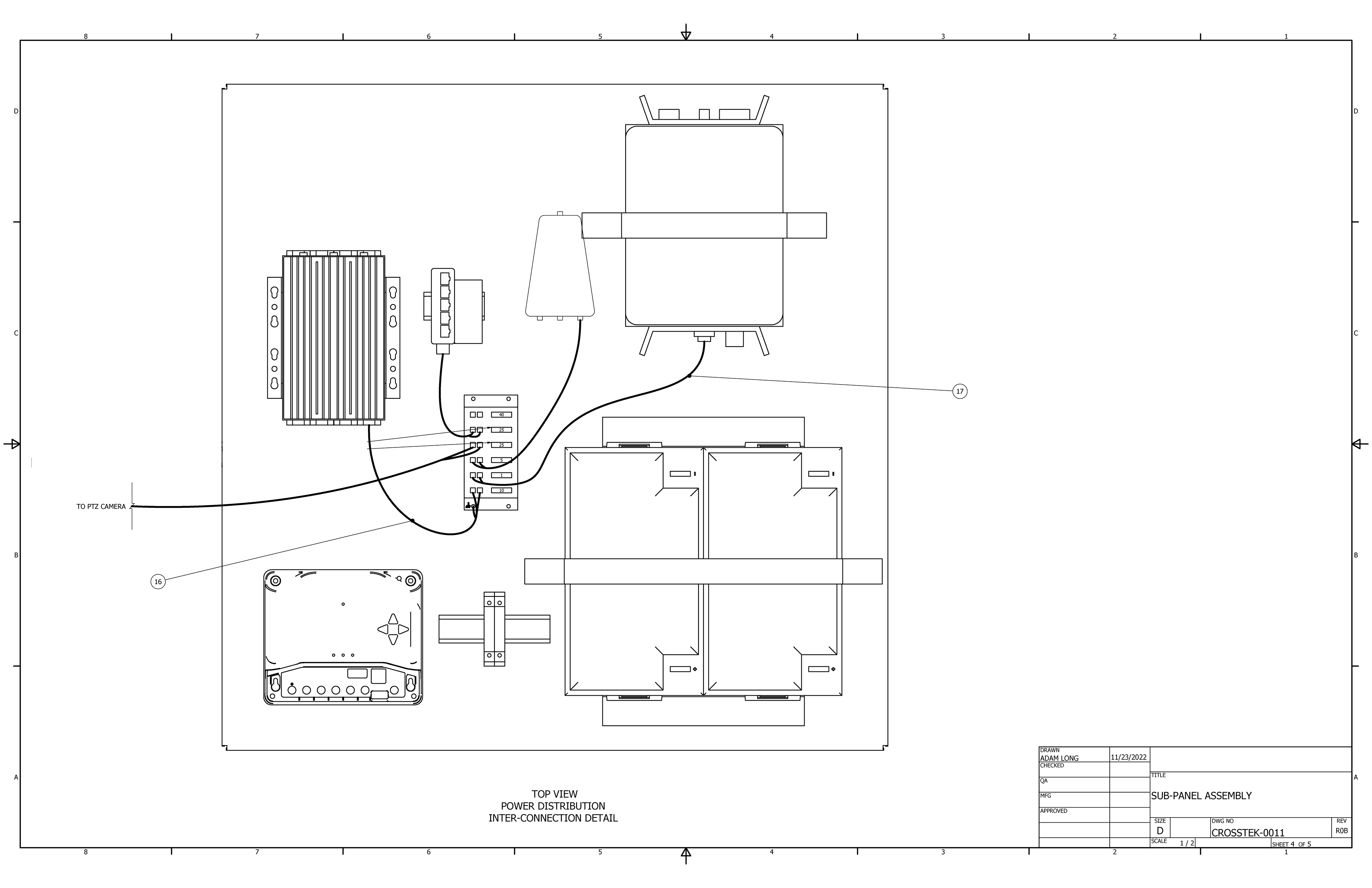
SUB-PANEL ASSEMBLY
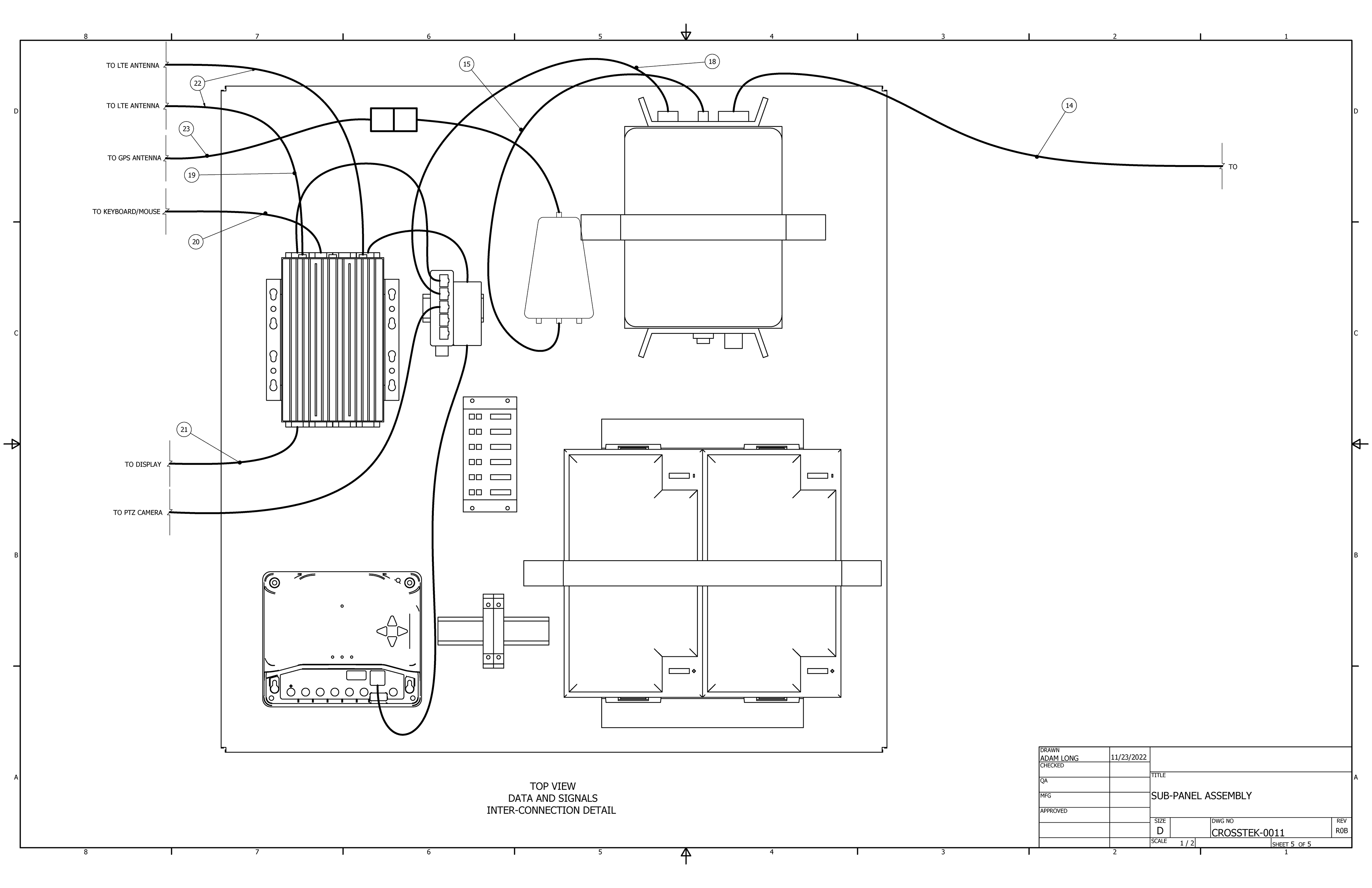
SUB-PANEL ASSEMBLY
FABRICATION AND DELIVERY
The client used drawings prepared by Bedrock to inter-connect all of the system components. The trailers were modified by removing all of the diesel engine parts. A sub-panel was fabricated and populated with batteries, solar inverter, and data acquisition equipment. The sub-panel was then bolted into the empty light tower trailer and all components were grounded. A six-inch pipe was fastened to the rear of the trailer to provide a support column for the solar panel. The trailers were then delivered to remote locations and are obtaining data today.
